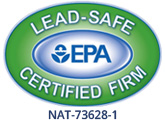Issues and Risks of Orangeburg Pipes
 If your home has recently started experiencing clogs and you see indents on your lawn, could you have a septic issue? While it’s a possibility, you could also have failing Orangeburg pipes.
If your home has recently started experiencing clogs and you see indents on your lawn, could you have a septic issue? While it’s a possibility, you could also have failing Orangeburg pipes.
A fixture of homes from the mid-20th century, Orangeburg pipes were an economical choice during the housing and population boom. Yet over 50 years later, their flimsy construction can cause serious plumbing issues. Here’s what you should know.
What Are Orangeburg Pipes?
Metal shortages occurred during World War II and the population surge that followed the war required more homes to be built. As a result, more affordable solutions arose to construct these properties and Orangeburg pipes were one.
While older pipes used lead or another type of metal, Orangeburg seemed convenient and innovative at the time. Also known as a bituminous fiber sewer pipe, they started with wood fibers or pulp, turned into a tube with a moisture-resistant adhesive. Coal tar coated the interior and exterior.
The pipes were installed in new homes constructed from the late 1940s into the 1970s, were intended to last 50 years and were comparably affordable to other alternatives at the time.
Does Your Home Has Orangeburg Pipes?
Failure before 50 years is not uncommon and unfortunately, many homeowners find out when a catastrophe happens.
Before it gets to this point, steps can be taken to strategize:
- Research when your home was built. Properties from the 1940s through the 1970s are more likely to have Orangeburg pipes.
- Ask your neighbors about the plumbing problems they have experienced.
- Check your lawn for uneven grass growth or sunken areas that can indicate your sewer lines use these pipes.
Issues with Orangeburg Pipes
If your home has Orangeburg pipes, you may experience a combination of the following issues:
- Tree Roots in Plumbing: Although all pipes are susceptible, the consistency and wood pulp used for Orangeburg allow tree roots to easily puncture the material in search of water and cause a clog.
- Clogs and Slow Drainage: A tree root or collapsed pipe may be to blame. Your home regularly experiences clogs in multiple areas or has slow drainage from sinks without any explainable cause. With your toilet, you may hear a bubbling noise – if it flushes at all.
- Strange Odor: The sink around your home routinely smells like rotten eggs or sewage. This can be the result of a plumbing backup.
- Collapsed Sewer Line: When this occurs, water pools on your property or inside your home, resulting in significant damage if not addressed right away.
Why do these issues happen with Orangeburg pipes? As they’re not fully waterproof, Orangeburg pipes absorb moisture, which distorts their shape and can lead to collapse. Eventually, layers separate on the inside can close off the pipe.
Pressure placed on the pipes by roots or the ground can eventually cause the pipes to collapse, resulting in clogs or a damaged sewer line.
How to Address Orangeburg Pipes
First, have a home inspection performed to check for Orangeburg pipe. If your property is found to have this type of piping:
- Schedule annual drain inspections to inspect their state and make sure they continue to work without clogs.
- Work with a plumber to implement “trenchless” piping. This involves inserting a new line through the Orangeburg for support. This strategy eliminates having to dig up your entire lawn to install new pipes.
- If clogs are frequent or you recently experienced a collapsed sewer line, you may need to have the Orangeburg replaced with new PVC pipes. It’s recommended all pipes be replaced at once.
Does your property having Orangeburg pipes? If you’re looking for reinforcements or to have new pipes installed, bring your inquiries to the plumbers at MJ Fahy & Sons. Contact us today to learn about our services.




